The Importance and Necessity of Having a Personal Website in the Digital Age
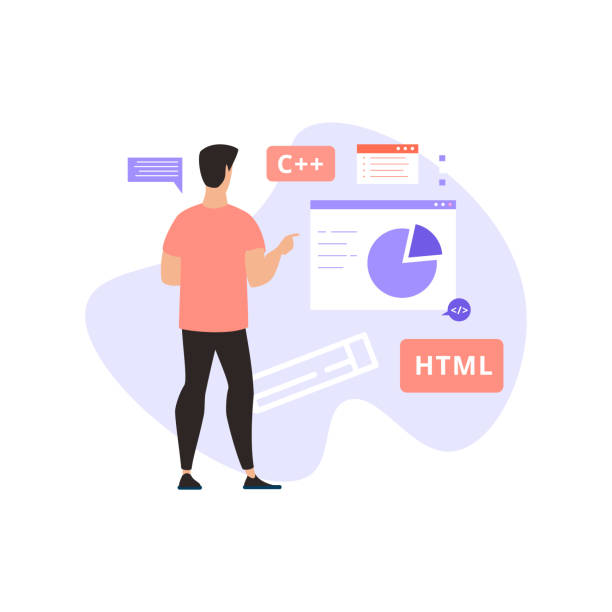
In today’s world, where physical boundaries are blurring and communications are increasingly shifting towards the digital space, having a strong online presence seems more vital than ever.
This article is an educational and comprehensive guide for personal website design, which will help you take a significant step towards branding and introducing yourself in this highly competitive space.
Your #Personal_Website acts as a #Digital_Identity; it’s a showcase that displays your skills, experiences, projects, and even your interests.
It doesn’t matter if you’re a freelancer, artist, writer, entrepreneur, or even a student, a personal website allows you to tell your story in a unique way.
Have you ever wondered how you can take your resume beyond a simple PDF file? Your personal website provides this opportunity.
This platform gives you complete control over how your information is displayed, and unlike social networks that have their own rules and limitations, your website is a territory entirely owned by you.
Thus, personal website design is not just an option, but a necessity that helps you establish direct and unmediated communication with your target audience, discover new career opportunities, and ultimately, increase your credibility and influence in your specialized field.
This introduction explained the importance of this topic, and we will continue to discuss more explanatory and in-depth aspects.
Are you tired of your e-commerce site having visitors but no sales? Rasaweb solves your main problem with professional e-commerce website design!
✅ Significant sales increase with targeted design
✅ Flawless user experience for your customers
⚡ Get a free consultation!
Planning and Strategy for Building Your Individual Website

Before taking any action for personal website design, precise and strategic planning is required.
This stage will be the cornerstone of your website’s success and will prevent the waste of time and resources in the future.
The first step is to determine the main goal of your website.
Do you want to showcase your portfolio? Provide educational content? Introduce your services? Or simply have a personal blog to share your thoughts? The answer to this question will determine the design and content direction of your site.
Next, you need to consider your target audience.
Who is this website designed for? Knowing your audience’s needs, interests, and questions will help you create relevant and engaging content.
For example, if your audience consists of potential employers, the design should be more formal, and the content should focus more on achievements and skills.
If you’re a blogger and your audience is the general public, the tone and content can be more entertaining and informal.
Isn’t it intriguing why some websites perform much better than others? A large part of this success comes down to the strong strategy behind them.
What kind of content will you produce? (articles, videos, images, resume) How will you keep this content updated? What services will you offer and how will you interact with your visitors? These guidelines are crucial for gathering and organizing ideas at the outset and ensure that your website proceeds in a purposeful and efficient direction.
Choosing the Right Platform for Your Personal Website Design
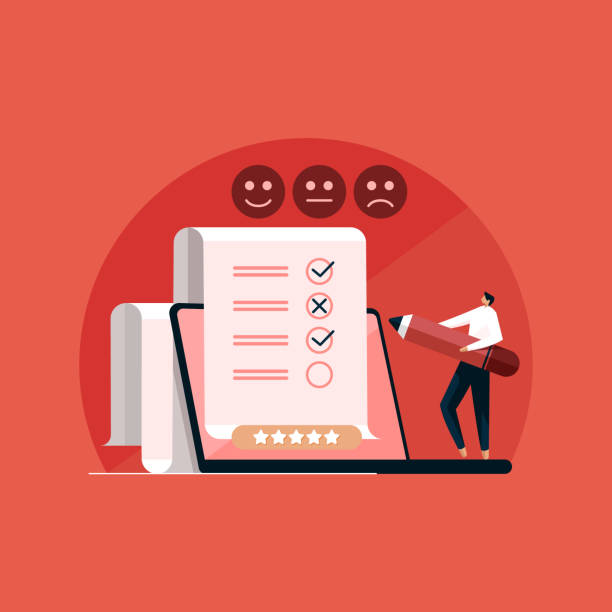
Choosing the right platform for personal website design is a crucial step that can completely change your experience of building and managing a site.
The web offers a variety of options, from Content Management Systems (CMS) to drag-and-drop website builders and even manual coding.
Each has its own advantages and disadvantages that should be analyzed based on your needs, skills, and budget.
WordPress is undoubtedly the most popular CMS in the world, suitable for all types of websites, including personal sites, due to its high flexibility, numerous plugins, and large user community.
Although it may take some time to learn, it offers unparalleled power and control.
On the other hand, platforms like Squarespace and Wix, with their simple user interfaces and Drag-and-Drop functionality, are excellent options for users with limited technical knowledge.
They allow you to have an attractive and professional website without the need for coding, although they may have limitations in terms of customization.
Choosing a specialized option that suits your needs is very important.
To help you make a better decision, the table below compares some of the most popular platforms for building a personal website:
| Feature/Platform | WordPress | Wix | Squarespace |
|---|---|---|---|
| Ease of Use | Medium to Difficult (requires learning) | Very Easy (Drag-and-Drop) | Easy (Ready-made templates) |
| Flexibility and Customization | High (with plugins and coding) | Medium (limited to internal tools) | Medium (professional templates) |
| Cost | Variable (hosting, domain, plugins) | Monthly/Annual plans | Monthly/Annual plans |
| Suitable for | Blog, portfolio, small business | Individuals and small businesses, portfolio | Artists, photographers, visual portfolios |
| SEO Support | Excellent (with plugins) | Good (internal tools) | Good (internal tools) |
Principles of User Interface and User Experience Design in Personal Websites

In the field of personal website design, User Interface (UI) and User Experience (UX) play key roles that are often overlooked, yet they have a direct impact on visitor retention and your credibility.
User Interface refers to the visual look and feel of your website: colors, fonts, layout, and all visual elements with which the user interacts.
User Experience, however, goes beyond appearance and concerns the user’s feeling when using your website; is the website easy to navigate? Is information quickly found? Is the experience pleasant and hassle-free?
A strong UI/UX design makes your website not only beautiful but also functional and accessible.
Among the important principles in this regard is Responsive Design.
This means that your website should display well on various screen sizes, from desktop to tablet and mobile, and provide a consistent user experience.
This is a crucial feature that Google also highly values and it impacts SEO rankings.
Also, Visual Hierarchy and appropriate use of Whitespace help with readability and ease of content comprehension.
This is an educational guide for creating an attractive website.
Did you know that most users decide within the first few seconds whether to stay on your site or not? This doubles the importance of initial and appealing design.
By focusing on these explanatory and specialized principles, you can create a website that not only looks professional but also provides a positive user experience for visitors.
Are you dissatisfied with the low conversion rate of visitors to customers on your e-commerce site?
With professional e-commerce website design by Rasaweb, solve this problem forever!
✅ Increase visitor-to-customer conversion rate
✅ Create an excellent user experience and gain customer trust
⚡ Get a free consultation
Creating Engaging and Targeted Content for a Personal Website
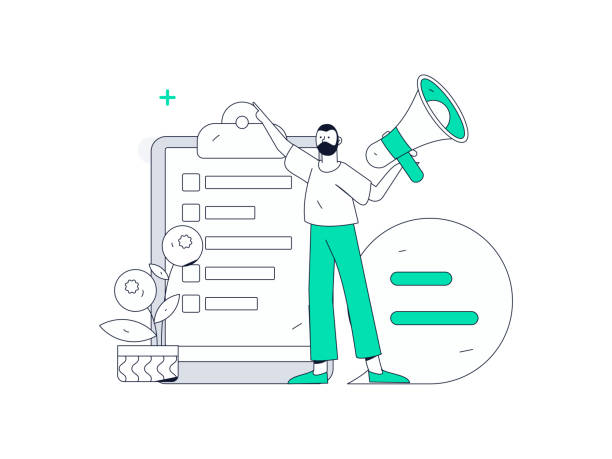
Content is king; this principle also applies to personal website design.
Merely having a beautiful website is not enough; what truly attracts and retains visitors is high-quality and valuable content.
Creating engaging and targeted content not only helps showcase your expertise but also encourages visitors to return to your site for more information or entertainment.
Types of content for a personal site can include the following:
- Resume and Portfolio: Displaying previous projects, certifications, and skills.
This section should be updated and complete. - Blog: A place to share thoughts, experiences, educational articles, and specialized analyses.
An active blog also helps improve your site’s SEO. - About Me: A section to introduce yourself, your life story, and the values you believe in.
This section is an opportunity for deeper connection with your audience. - Case Studies and Testimonials: Concrete evidence of your successes and positive feedback from clients or colleagues.
In content creation, prioritize quality over quantity.
Original, rich, and entertaining content has a higher chance of being seen and shared.
Try to produce thought-provoking content that makes the audience think and invites interaction.
Using images, videos, and infographics can double the appeal of your text content.
This is a key guideline: always remember that your content should add value for the visitor, whether by providing specialized knowledge, an entertaining story, or an in-depth analysis.
This approach ensures that your personal site is not just an online resume but a valuable resource for its audience.
Technical Aspects of Launching an Individual Website: Domain and Hosting
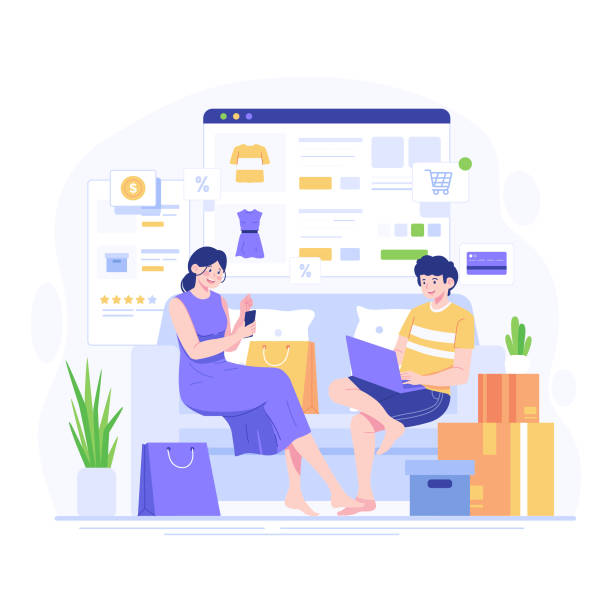
After deciding on your personal website design and its content, it’s time for the technical aspects that are essential for your site to go online.
The two main elements at this stage are Domain Name and Hosting.
The domain is your website’s address (like example.com) and choosing it is very important.
Try to choose a name that is short, memorable, relevant to you or your activity, and easy to type.
You can use popular extensions like .com, .ir, or newer extensions like .me or .online.
Domain registration is done through domain registrars.
Hosting is the space where your website files (text, images, code) are stored, and when someone enters your domain address in a browser, these files are sent to their browser to display your site.
Choosing a reputable hosting company that suits your needs is crucial.
Factors such as loading speed, storage space, bandwidth, technical support, and server security should be considered.
A specialized tip: Shared hosting is an economical and suitable option for starting and for personal websites with low traffic, but for higher traffic, VPS or dedicated hosting is recommended.
It is educational to know that an SSL (Secure Sockets Layer) certificate is also very important.
SSL encrypts the connection between the user and your website and is essential for SEO and site credibility.
Today, most hosting companies offer free SSL.
Also, initial SEO settings, such as registering your site with Google Search Console and creating a sitemap, should also be done at this stage to make your site accessible and indexable for search engines.
These technical tips provide a solid foundation for your online presence.
Adding Advanced Features and Analytical Tools to a Personal Website
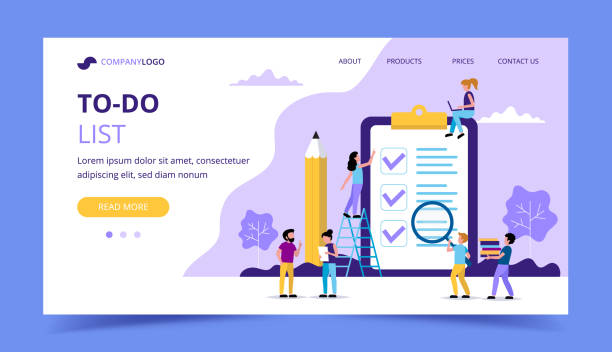
To enhance a personal website design, adding advanced features and analytical tools is essential.
These features not only improve user experience but also provide you with deep analytical insights into your site’s performance.
One of the first and most important additions is a contact form.
This form allows visitors to easily get in touch with you and provides a clear communication channel for business or collaboration purposes.
Social media integration is also vital.
Adding links to your LinkedIn, Instagram, Twitter profiles, or any other platform where you are active, allows visitors to follow you on other platforms and increases your interaction with your audience.
This is a specialized guide for creating a broad communication network.
Have you ever thought about how you can monitor user behavior on your website?
Analytical tools like Google Analytics come to your aid here.
By installing this tool, you can obtain precise information about the number of visitors, pages visited, time spent on the site, traffic sources, and even demographic characteristics of your users.
This data is highly valuable for optimizing content, improving user experience, and increasing your site’s effectiveness, helping you with informative and strategic decisions.
Also, tools like Hotjar can provide deeper insights for analyzing user behavior through heatmaps and session recordings.
The table below introduces some important analytical tools and advanced features for a personal website:
| Tool/Feature | Description | Primary Use |
|---|---|---|
| Google Analytics | Free Google tool for tracking website traffic and user behavior. | Analyzing visit data, traffic sources, popular pages. |
| Google Search Console | Free Google tool for monitoring site performance in search. | Viewing keywords, index status, site errors. |
| Hotjar | Analytical tool for heatmaps, session recordings, surveys. | Deeper understanding of user behavior and UX weaknesses. |
| Contact Form | Allows visitors to directly communicate with you. | Receiving messages, collaboration requests, feedback. |
| Email Newsletter | System for collecting emails and sending updates. | Establishing direct and continuous communication with the audience. |
Maintenance, Updates, and Security of Your Personal Website
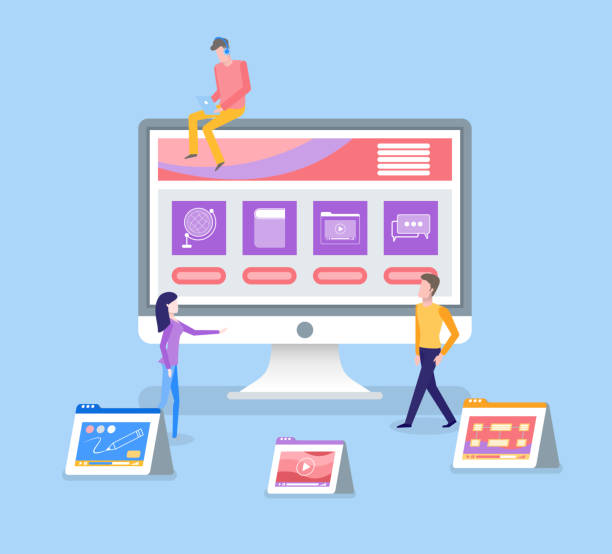
Maintaining security and continuous updates are core pillars of success in personal website design.
A dynamic website requires continuous attention to maintain optimal performance, protect against cyber threats, and provide a smooth user experience.
Regular updates of software, plugins, and themes used (especially in CMSs like WordPress) are of paramount importance.
These updates not only add new functionalities but also patch known security vulnerabilities.
Neglecting this can make your website vulnerable to hacker attacks and malware.
Did you know that many cyber attacks occur due to simple lack of updates? This is thought-provoking content and at the same time an important warning.
Regular backup of website data is a golden guideline.
In case of any issue (server failure, cyber attack, human error), having a backup copy helps you quickly restore your website and prevent the loss of valuable data.
Website security is a specialized and complex topic.
From installing reputable security plugins to using strong passwords, enabling two-factor authentication, and protecting against DDoS and SQL Injection attacks, all these should be considered.
Recent news alerts about data breaches in small and large websites double the importance of this issue.
Investing in security is an investment in preserving your credibility and visitor trust.
These aspects might not be as entertaining as visual design, but without them, your other efforts might go to waste.
Active and continuous maintenance ensures the stability and long-term success of your personal website.
Are you tired of your e-commerce website not generating income up to its potential? Rasaweb, specializing in professional e-commerce website design, solves this problem forever!
✅ Increase sales and revenue rates
✅ High loading speed and unparalleled user experience
⚡ Get a free consultation for e-commerce website design
Personal Branding and Earning Income Through a Dedicated Website
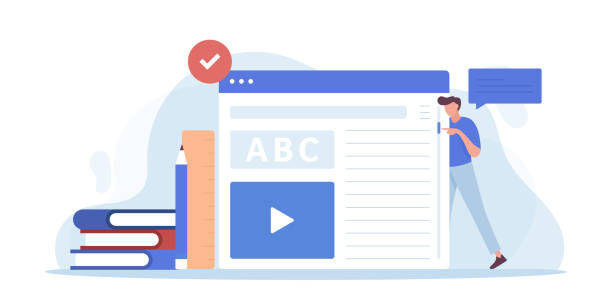
Ultimately, the goal of personal website design is usually to create a strong brand and possibly generate income.
Your website is a powerful platform for personal branding.
This allows you to control your narrative, showcase your unique strengths and values, and present a professional and trustworthy image of yourself.
A strong personal brand can open new doors for you, including better career opportunities, beneficial collaborations, and increased credibility in your specialized field.
Through detailed analysis, you can understand what type of content receives the most feedback and how you can best develop your brand.
Beyond branding, a personal website can also be a tool for earning income.
There are various ways to educate and earn income from a dedicated website:
- Offering Freelance Services: If you are an expert in a field such as graphic design, writing, programming, or consulting, you can sell your services directly through your website.
- Selling Digital Products: E-books, online courses, templates, or software tools.
- Affiliate Marketing: Introducing others’ products or services and receiving a commission for each sale through unique links.
- Advertising: Displaying ads relevant to your field of activity (like Google AdSense).
- Membership: Offering exclusive and premium content to special members in exchange for a membership fee.
Did you know that many successful individuals in various fields have turned their personal websites into income-generating hubs? This is thought-provoking and entertaining content for those seeking digital entrepreneurship.
With a specialized strategy and valuable content, your website can be not only a digital resume but also a growth engine for your professional and financial future.
The Future of Personal Website Design and New Trends
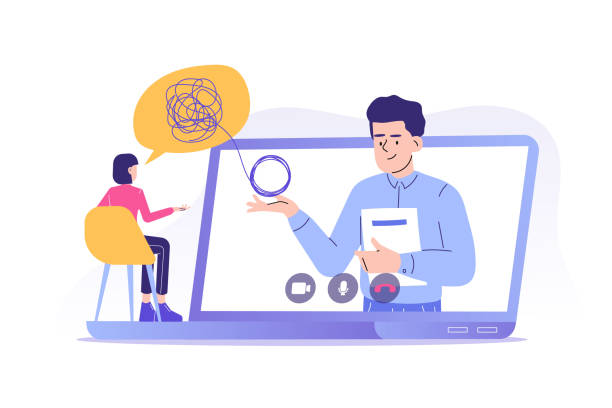
The world of personal website design is constantly evolving, with new trends continually emerging.
Awareness of these trends can help you prepare your website for the future and stay ahead of your competitors.
One of the most important current trends is Artificial Intelligence (AI) in web design.
AI-powered tools can assist you in various stages of design, from content generation to layout optimization and even color scheme suggestions.
These technologies can speed up the website creation process and make it more accessible for individuals with less technical knowledge.
Voice Search is also growing rapidly.
With the increasing use of voice assistants like Siri, Alexa, and Google Assistant, optimizing content for Voice SEO is becoming more important.
This means focusing on long-tail keywords and direct, conversational answers to questions.
This is a specialized guideline for foresight in SEO.
Accessibility is also a vital trend.
Designing a website that is usable for everyone, including people with disabilities, is not only ethically correct but also increasingly important legally.
This includes using Alt-text for images, keyboard navigation, and adhering to color contrast.
News on other trends: Personalized user experiences, micro-interactive animations, and Minimalist designs are also among those gaining popularity.
By precise analysis of these trends and incorporating them into your educational strategy and website development, you can ensure that your personal website remains relevant, attractive, and efficient not only today but also in the future.
The future of your personal website is bright and full of new opportunities.
Frequently Asked Questions
| Question | Answer |
|---|---|
| 1. What is a personal website? | It is a website created by an individual to showcase their personal information, resume, portfolio, interests, or blog. |
| 2. Why is having a personal website important? | It allows you to have a professional online presence, showcase your skills and experiences, connect with others, and manage your digital identity. |
| 3. What content should I include on my personal website? | It usually includes an About Me page, resume, portfolio, contact information, a blog (optional), and a gallery (if needed). |
| 4. How do I choose a suitable domain name for my personal website? | It’s best to use your first and last name (e.g., yourname.com). Choose a short, memorable name relevant to your identity. |
| 5. Do I need coding knowledge to design a personal website? | No, you can build your website without coding by using Content Management Systems (CMS) like WordPress or Website Builders like Wix or Squarespace. |
| 6. What is hosting and what type of hosting is suitable for a personal website? | Hosting is the space where your website files are stored to be accessible to the public. For a personal website, Shared Hosting is usually sufficient and cost-effective. |
| 7. What is the importance of Responsive Design for a personal website? | Responsive design ensures that your website displays correctly and with a suitable appearance on all devices (computers, tablets, mobile phones), which is crucial for an excellent user experience. |
| 8. How can I optimize my personal website for search engines (SEO)? | You can improve your website’s SEO by using relevant keywords, producing high-quality content, optimizing images, having a proper URL structure, and acquiring backlinks. |
| 9. How do I keep my personal website updated? | Regularly add new content (such as blog posts or new portfolio items), keep contact information updated, and ensure that the software and plugins used are up-to-date. |
| 10. Can I use my personal website to earn income? | Yes, you can generate income by selling your products or services, advertising, affiliate marketing, or providing specialized consultations, depending on your content type and goals. |
And other services of Rasaweb Advertising Agency in the field of advertising
Smart Digital Advertising: A blend of creativity and technology to attract customers through marketing automation.
Smart Brand Identity: A professional solution for digital branding with a focus on attractive UI design.
Smart Link Building: An innovative platform to improve click-through rates with Google Ads management.
Smart Digital Advertising: Revolutionize campaign management with the help of key page optimization.
Smart Marketing Automation: An effective tool to improve SEO ranking with the help of Google Ads management.
And hundreds of other services in the field of internet advertising, advertising consultation, and organizational solutions
Internet Advertising | Advertising Strategy | Advertorial
Sources
Building a Successful Personal Website Practical Tips for Website Design Comprehensive Guide to Digital Success Top Tools for Personal Website Design
🚀 With Rasaweb Afarin, your business soars in the digital world! From SEO and targeted content creation to multilingual website design and advertising campaign management, we are with you every step of your digital growth journey to ensure a powerful and lasting presence.
📍 Tehran, Mirdamad Street, next to Bank Markazi, Kazeroun Jonoubi Alley, Ramin Alley, No. 6

